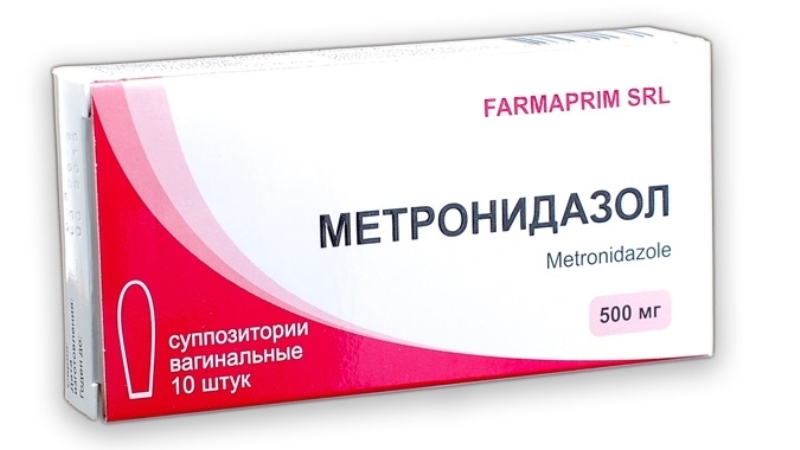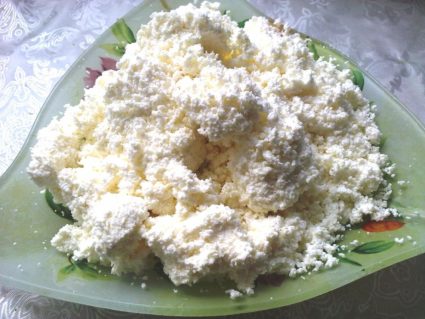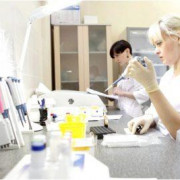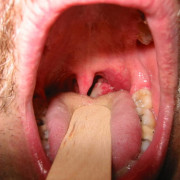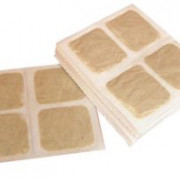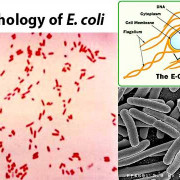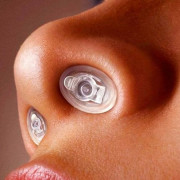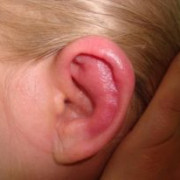Lactobacillus (лактобактерии или лактобациллы, род бактерий)
Содержание:
- Lactobacillus rhamnosus nedir?
- Пробиотические преимущества Lactobacillus GG
- Быстрые факты
- Учитывая добавление
- Uses
- Why probiotics matter
- References
- Dosage and Recommendations
- Therapeutic benefits
- Cheese production
- таксономия
- Genome structure
- How should I take lactobacillus rhamnosus GG?
- Enfermedades
- Представители
- морфология
Lactobacillus rhamnosus nedir?
Lactobacillus rhamnosus, bağırsaklarda bulunan bir bakteri türüdür. Bu tür, laktaz enzimini üreten bir tür bakteri olan Lactobacillus cinsine aittir. Bu enzim, süt ürünlerinde bulunan şeker laktozunu laktik aside ayırır.
Bu cinsten bakteriler probiyotik olarak adlandırılır. Probiyotikler, sağlık yararları sağlayabilen canlı mikroorganizmalardır.
Yüzlerce çalışma Lactobacillus rhamnosus’u araştırmış ve faydalarını onaylamıştır. Vücutta asitli ve bazik koşullarda hayatta kalmak için benzersiz bir şekilde adapte olan bu bakteri, bağırsak duvarlarına yapışabilir ve kolonileşebilir. Bu özellikler, bu probiyotik bakteriye daha iyi bir hayatta kalma şansı verir, bu nedenle uzun vadeli faydaları vardır.
Her biri farklı özelliklere sahip birçok farklı türü vardır. Lactobacillus rhamnosus içeren probiyotik takviyeleri mevcuttur ve probiyotik içeriğini artırmak için yoğurt, peynir, süt, kefir ve diğer süt ürünlerine eklenir.
Ayrıca başka nedenlerden dolayı da süt ürünlerine eklenebilir. Örneğin, bu probiyotik bakteri peynir olgunlaşırken tadını artırıcı bir rol oynar.
Пробиотические преимущества Lactobacillus GG
- Этот штамм молочнокислых бактерий устойчив к желудочному соку и желчи. Он производится и может использоваться даже в порошках – его способности полностью сохраняются и работают в кишечнике.
- При поступлении в кишечник Lactobacillus GG прилипают к его стенкам и держатся в течение недели. При этом они не вытесняют другие полезные бактерии, не конфликтуют с ними.
- Lactobacillus GG препятствуют проникновению в слизистую оболочку кишечника и в кровь патогенных микроорганизмов. Укрепляя барьерные механизмы кишечника, они препятствуют колонизации во внутренних органах кишечной палочки и сальмонеллы. Lactobacillus GG вырабатывает молочную кислоту, которая обладает антибактериальными свойствами и может блокировать распространение патогенных болезнетворных бактерий в желудочно-кишечном тракте.
- Lactobacillus GG устойчивы при высоких температурах и не требуют хранения в холодильнике.
Как и другие пробиотические добавки, Lactobacillus GG используется для улучшения баланса бактерий в пищеварительной системе. Сообщество бактерий внутри нашего желудочно-кишечного тракта называется микробиомом. Когда микробиом чрезмерно заселяется плохими бактериями, может возникнуть состояние внутреннего дисбактериоза.
Лечение пробиотиком Lactobacillus rhamnosus GG (ATCC 53103), помогает восстановить баланс микробиома. Дневная дозировка при лечении – от 1 до 10 биллионов КОЕ.
https://www.youtube.com/watch?v=ytadvertiseru
Исследования показывают, что при использовании Lactobacillus rhamnosus GG организм получает необходимую иммунную поддержку. Этот пробиотик может стимулировать иммунную систему, облегчать симптомы запоров и синдрома раздраженного кишечника, стабилизировать уровень сахара в крови, уменьшать аллергические реакции, уменьшать частоту простуды и гриппа, а также способствовать снижению веса и уровня холестерина.
Быстрые факты
- Ваше тело зависит от пробиотиков.
- Без них гораздо сложнее переваривать пищу и поглощать важные питательные вещества.
- L, Casei добавки часто используются для профилактики или лечения диареи.
Вы едва можете подумать, но глубоко внутри своей кишки есть целый мир живых организмов. Может быть, это звучит немного неудобно, но большинство из них есть для вашего же блага.
Один из этих микроорганизмов называется Lactobacillus casei , или L. Casei . Это одна из многих дружественных бактерий, которые называют вашу пищеварительную систему дома. Вероятно, у вас также есть некоторые из ваших мочевых и половых путей.
Эти полезные организмы также известны как пробиотики.
В отличие от вредных бактерий, которые заставляют вас болеть, пробиотики вроде L. casei полезны для вашей пищеварительной системы. Собственно, ваше тело зависит от них. Без них гораздо сложнее переваривать пищу и поглощать важные питательные вещества.
Они также помогают контролировать некоторые из наиболее опасных микроорганизмов. Если у вас недостаточно хороших бактерий, все может выйти из равновесия и вызвать проблемы.
Существует много типов пробиотиков. Наряду с Bifidobacterium , Lactobacillus является одним из наиболее распространенных. В рамках этих двух типов пробиотиков существует много разновидностей.
Преимущества
Учитывая добавление
L. casei или другие пробиотические добавки к вашему ежедневному режиму? Вы можете сначала обсудить это с вашим врачом. Вот почему: Новые или ухудшающиеся симптомы могут сигнализировать о недиагностированном состоянии здоровья, которое требует лечения или мониторинга.
Если у вас есть существующая проблема со здоровьем, хроническая болезнь или ослабленная иммунная система, пробиотики могут помешать вашему текущему лечению или поставить вас на повышенный риск серьезных побочных эффектов.
Если вы планируете заменить лекарственные препараты, отпускаемые по рецепту, пробиотиками, ваш врач должен будет знать
То же самое верно, если вы беременны или кормите грудью.
Ваш врач или фармацевт может помочь вам в самой безопасной дозировке и на что обратить внимание на маркировку продукта.. Нижняя строка
Нижняя строка
Uses
Dairy
The most common application of L. casei is industrial, specifically for dairy production.
Lactobacillus casei is typically the dominant species of nonstarter lactic acid bacteria (i.e. contaminant bacteria) present in ripening cheddar cheese, and, recently, the complete genome sequence of L. casei ATCC 334 has become available. L. casei is also the dominant species in naturally fermented Sicilian green olives.
Medical
A commercial beverage containing L. casei strain Shirota has been shown to inhibit the in vivo growth of Helicobacter pylori, but when the same beverage was consumed by humans in a small trial, H. pylori colonization decreased only slightly, and the trend was not statistically significant. Some L. casei strains are considered to be probiotic, and may be effective in alleviation of gastrointestinal pathogenic bacterial diseases. According to World Health Organization, those properties have to be demonstrated on each specific strain—including human clinical studies—to be valid.L. casei has been combined with other probiotic strains of bacteria in randomized trials studying its effects in preventing antibiotic-associated diarrhea (AAD) and Clostridium difficile infections (CDI), and patients in the trials who were not given the placebo had significantly lower rates of AAD or CDI (depending on the trial) with no adverse effects reported. Additionally, trials have shown significantly shorter recovery times in children suffering from acute diarrhea (primarily caused by rotavirus) when given different L. casei treatments when compared to placebo. Studies suggest that Lactobacillus is a safe and effective treatment for acute and infectious diarrhea.
In the preparation of food, L. casei bacteria can be used in the natural fermentation of beans to lower levels of the compounds causing flatulence upon digestion.
Commercial probiotic
Among the best-documented, probiotic L.casei, L. casei DN-114001, and L. casei Shirota have been extensively studied and are widely available as functional foods (see Actimel, Yakult).
Another commercially available form of L. casei can be found in Danactive made by Dannon. They registered trademarked L. casei as L. casei Immunita.
Others
In the past few years, many studies have been conducted in the decolorization of azo dyes by lactic acid bacteria such as L. casei TISTR 1500, L. paracasei, Oenococcus oeni, etc. With the azoreductase activity, mono- and diazo bonds are degraded completely, and generate other aromatic compounds as intermediates.
Why probiotics matter
You barely give them a thought, but deep within your gut, there’s a whole world of living organisms. Maybe it sounds a bit unsettling, but most of them are there for your own good.
One of those microorganisms is called Lactobacillus casei, or L. casei. It’s one of many friendly bacteria that call your digestive system home. You probably also have some in your urinary and genital tracts.
These helpful organisms are also known as probiotics.
Unlike the harmful bacteria that make you sick, probiotics like L. casei are beneficial to your digestive system. Actually, your body depends on them. Without them, it’s much harder to digest food and absorb important nutrients.
They also help keep some of the more harmful microorganisms under control. If you don’t have enough of the good bacteria, things can get out of balance and cause trouble.
There are many types of probiotics. Along with Bifidobacterium, Lactobacillus is among the most common. Within these two types of probiotics, there are many varieties.
References
- Madigan M, Martinko J (editors). (2005). Brock Biology of Microorganisms (11th ed.). Prentice Hall. ISBN 978-0-13-144329-7.
- ROISSART, H. and Luquet F.M. Bactéries lactiques: aspects fondamentaux et technologiques. Uriage, Lorica, France, 1994, vol. 1, p. 605. ISBN 2-9507477-0-1
- Facklam RR, Pigott NE, Collins MD. Identification of Lactococcus species from human sources. Proceedings of the XI Lancefield International Symposium on Streptococci and Streptococcal Diseases, Siena, Italy. Stuttgart: Gustav Fischer Verlag; 1990:127
- Kok J, Buist G, Zomer AL, van Hijum SA, Kuipers OP (2005). «Comparative and functional genomics of lactococci». FEMS Microbiology Reviews. 29 (3): 411–33. doi:. PMID .
- ^
- Bolotin A, Quinquis B, Renault P, Sorokin A, Ehrlich SD, Kulakauskas S, Lapidus A, et al. (2004). «Complete sequence and comparative genome analysis of the dairy bacterium Streptococcus thermophilus«. Nature Biotechnology. 22 (12): 1554–8. doi:. PMID .
- ^
- ^
Dosage and Recommendations
L. rhamnosus probiotic supplements can be purchased in health food stores or online.
They can contain only L. rhamnosus species or these species combined with other probiotic bacteria.
Probiotic bacteria are measured by the number of living organisms per capsule, known as colony-forming units (CFU). A typical L. rhamnosus supplement holds approximately 10 billion live bacteria — or 10 billion CFU — per capsule.
For general health, 1 capsule containing at least 10 billion live bacteria is sufficient.
To help prevent antibiotic-related diarrhea, take 2 capsules of L. rhamnosus GG daily providing 10 billion live bacteria or 1 capsule with over 20 billion live bacteria ().
Take the probiotic supplement a few hours after your antibiotic(s), then continue for at least one week after your course of antibiotics to help restore a healthy gut.
Dosage guidelines have not been established for other uses of L. rhamnosus, but experts suggest that a similar daily dose may be appropriate.
Keep in mind that L. rhamnosus is sometimes added to dairy products — such as yogurts and milk — to boost their probiotic content and to cheeses to aid the ripening process.
Therapeutic benefits
The feasibility of using Lactic acid bacteria (LAB) as functional protein delivery vectors has been widely investigated.Lactococcus lactis has been demonstrated to be a promising candidate for the delivery of functional proteins because of its noninvasive and nonpathogenic characters. Many different expression systems of L. lactis have been developed and used for heterologous protein expression.
Lactose fermentation
In Shuichi Nakamura’s, Yusuke V. Marimoto, and Seishi Kudo’s study, they seek to prove that some fermentation produced by L. lactis can hinder motility in pathogenic bacteria. The motilities of Pseudomonas, Vibrio and Leptospira strains were also severely disrupted by lactose utilization by L. lactis.
Using Salmonella flagellar as the experimental group, Nakamura’s team found that a product of lactose fermentation is the cause of motility impairment in Salmonella. It is suggested that the L. lactis supernatant mainly affects Salmonella motility through disturbing flagellar rotation but not through irreversible damage against morphologies and physiologies. Lactose fermentation by L. lactis produces Acetate that reduces the intracellular pH of Salmonella, which in turn slow down the rotation of their flagella. These results highlight the potential use of L. lactis for preventing infections by multiple bacterial species.
Secretion of Interleukin-10
Genetically engineered L. lactis can secrete the cytokine interleukin-10 (IL-10) for therapeutic intervention for the treatment of inflammatory bowel diseases (IBD), since IL-10 has a central role in downregulating inflammatory cascades and matrix metalloproteinases. A study by Lothar Steidler and Wolfgang Hans shows that this in situ synthesis of IL-10 by genetically engineered L. lactis requires much lower doses than systemic treatments like antibodies to tumor necrosis factor (TNF) or recombination IL-10.
The authors propose two possible routes by which IL-10 can reach its therapeutic target. Genetically engineered L. lactis may produce murine IL-10 in the lumen, and the protein may diffuse to responsive cells in the epithelium or the lamina propria. Another route involves L. lactis taken up by M cells because of its bacterial size and shape, and the major part of the effect may be due to recombinant IL-10 production in situ in intestinal lymphoid tissue. Both routes may involve paracellular transport mechanisms that are enhanced in inflammation. After transport, IL-10 may directly down-regulate inflammation. In principle, this method may be useful for intestinal delivery of other protein therapeutics that are unstable or difficult to produce in large quantities and an alternative to the systemic treatment of IBD.
Tumor-suppressor through Tumor metastasis-inhibiting peptide KISS1
Another study, led by Zhang B, created a L. lactis strain that maintains a plasmid containing a tumor metastasis-inhibiting peptide known as KISS1.L. lactis NZ9000 was demonstrated to be a cell factory for the secretion of biologically active KiSS1 protein, exerting inhibition effects on human colorectal cancer HT-29 cells.
KiSS1 secreted from recombinant L. lactis strain effectively downregulated the expression of Matrix metalloproteinases (MMP-9) – a crucial key in the invasion, metastasis, and regulation of the signaling pathways controlling tumor cell growth, survival, invasion, inflammation, and angiogenesis. The reason for this is that KiSS1 expressed in L. lactis activates the MAPK pathway via GPR54 signaling, suppressing NFκB binding to the MMP-9 promoter and thus downregulating MMP-9 expression. This, in turn, reduces the survival rate, inhibits metastasis and induces dormancy of cancer cells.
In addition, it was demonstrated that tumor growth can be inhibited by the LAB strain itself due to the LAB’s ability to produce exopolysaccharides. This study shows that L. lactisNZ9000 can inhibit HT-29 proliferation and induce cell apoptosis by itself. The success of this strain’s construction helped to inhibit migration and expansion of cancer cells, showing that the secretion properties of L. lactis of this particular peptide may serve as a new tool for cancer therapy in the future.
Cheese production
L. lactis subsp. lactis (formerly Streptococcus lactis) is used in the early stages for the production of many cheeses, including brie, camembert, Cheddar, Colby, Gruyère, Parmesan, and Roquefort. The state Assembly of Wisconsin, also the number one cheese-producing state in the United States, voted in 2010 to name this bacterium as the official state microbe. It would have been the first and only such designation by a state legislature in the nation, however the legislation was not picked up by the Senate. The legislation was introduced in November 2009 as Assembly Bill 556 by Representatives Hebl, Vruwink, Williams, Pasch, Danou, and Fields; it was cosponsored by Senator Taylor. The bill passed the Assembly on May 15, 2010, and was dropped by the Senate on April 28.
The use of L. lactis in dairy factories is not without issues. Bacteriophages specific to L. lactis cause significant economic losses each year by preventing the bacteria from fully metabolizing the milk substrate. Several epidemiologic studies showed the phages mainly responsible for these losses are from the species , c2, and P335 (all from the family Siphoviridae).
таксономия
лактобацилла является самым разнообразным из трех родов семейства Lactobacillaceae, принадлежащих к типу Firmicutes, класс Bacilli, отряд Lactobacillales.
Этот род делится на три группы (A, B и C) в зависимости от типа ферментации: A) включает форсированные гомоферментативные виды, B) факультативно гетероферментативные виды и C) облигатные гетероферментативные виды.
Lactobacillus rhamnosus принадлежит к группе B этого подразделения. Он также входит в функциональную группу молочнокислых бактерий (БАЛ). БАЛ — это бактерии, которые в результате ферментации углеводов вырабатывают в основном молочную кислоту в качестве конечного метаболита..
Этот вид изначально считался подвидом L. casei, Позже, это было поднято на уровне вида благодаря генетическим исследованиям, из-за большого морфологического сходства и характеристик.
Этот и два других вида составляют комплекс Lactobacillus casei, функциональная группа без таксономической валидности. Один из наиболее изученных штаммов этого вида, L. rhamnosus GG, выделен из кишечника человека.
Genome structure
The genome of Lactobacillus casei strain ATCC 334 is composed of one circular chromosome and one plasmid. The chromosome has 2.9 million base pairs and the plasmid has 0.029 million base pairs. The chromosome encodes for 2,751 proteins and the sequencing was completed at the US DOE Joint Genome Institute and The Lactic Acid Bacteria Genome Consortium and Fidelity Systems, Inc. Currently, the genome of the plasmid of Lactobacillus casei is being sequenced.
One of L. casei’s qualities is its ability to live in various diverse ecological niches. Research through comparative genomic analyses has suggested that extensive gene loss and gene acquisitions during the evolution of lactobacilli, presumably via bacteriophage or conjugation-mediated horizontal gene transfers have facilitated L. casei’s adaptation to diverse ecological niches (1). The study used 40 different strains of L. casei showing that there is a high degree of recombination and phylogenetic diversity among the species.
How should I take lactobacillus rhamnosus GG?
When considering the use of herbal supplements, seek the advice of your doctor. You may also consider consulting a practitioner who is trained in the use of herbal/health supplements.
If you choose to take lactobacillus rhamnosus GG, use it as directed on the package or as directed by your doctor, pharmacist, or other healthcare provider. Do not use more of this product than is recommended on the label.
Lactobacillus rhamnosus GG may be taken with or without food.
If you cannot swallow a capsule whole, open the capsule and sprinkle the medicine into a spoonful of a baby food or applesauce to make swallowing easier. Swallow right away. Do not save the mixture for later use. Discard the empty capsule.
If you take lactobacillus rhamnosus GG to prevent traveler’s diarrhea, start taking it 2 or 3 days before you travel. Keep taking it daily throughout the trip.
Call your doctor if the condition you are treating with lactobacillus rhamnosus GG does not improve, or if it gets worse while using this product.
Lactobacillus rhamnosus GG is available in capsule form. Other forms may also be available. Some dairy products, especially yogurt, also contain lactobacillus rhamnosus GG.
Do not use many different forms of lactobacillus rhamnosus GG at the same time, unless your healthcare provider has told you to. You may get too much of this product if you use different forms together.
Store at room temperature away from moisture, heat, and sunlight. Keep each capsule in its foil blister pack until you are ready to take the product.
You may also store this product in the refrigerator. Do not freeze.
Do not use this product if the blister foil covering the capsules is torn.
Enfermedades
Lactococcus lactis es considerada como un patógeno oportunista de baja virulencia. Sin embargo, su incidencia en humanos y animales ha venido en aumento en los últimos años.
En el caso de seres humanos, un sistema inmune debilitado y exposiciones a, o consumo de, productos lácteos no pasteurizados, son factores de riesgo.
En humanos
Lactococcus lactis subsp. cremoris ha sido señalada como agente causal de bacteriemia, diarreas agudas, endocarditis bacteriana, septicemia, abscesos hepáticos y cerebrales, neumonitis necrotizante, neumonitis purulenta, artritis séptica, infección profunda del cuello, infección del torrente sanguíneo por catéter,, peritonitis, empiema, colangitis ascendente y canaliculitis.
Lactococcus lactis subsp. lactis también se ha aislado de muestras clínicas de sangre, lesiones cutáneas y orina. Hay algunos informes que indican la participación de Lactococcus lactis subsp. lactis en situaciones de emergencia como artritis séptica, peritonitis y osteomielitis.
Tratamiento
No existe un tratamiento estándar definido para infecciones por Lactococcus lactis subsp. cremoris. Las pruebas de susceptibilidad han sido la base para la definición de los tratamientos en cada caso.
La penicilina, la cefalosporina de tercera generación, cefotaxima y coamoxiclav, han sido usados con base en dicho criterio. La cefotaxima mostró pobres resultados para tratar un absceso hepático, quizás debido a complicaciones por empiema.
Mientras no haya una guía específica, la terapia antimicrobiana debe cumplir con la susceptibilidad del patógeno aislado de los cultivos. La vancomicina ha resultado efectiva en la mayoría de los casos.
Una terapia antimicrobiana alternativa que también ha resultado exitosa consiste de ceftriaxona y gentamicina por 10 días, seguida por ceftriaxona intravenosa por 6 semanas.
En animales
Lactococcus lactis subsp. lactis ha sido relacionada con un caso de muerte masiva de aves acuáticas de España. El evento, ocurrido en 1998, afectó a más de 3.000 aves (0,6% de la población total de aves acuáticas en el área).
Las especies más afectadas fueron las fochas, las palas y los patos silvestres. Los síntomas fueron: alas caídas, lentitud y dificultad respiratoria. Exámenes postmortem mostraron congestión pulmonar leve.
Esta subespecie también ha causado mortalidades de entre 70 y 100% en esturiones híbridos en condiciones de cultivo. Los peces enfermos mostraban anorexia, color de cuerpo pálido y manchas rojizas en el abdomen.
Exámenes histopatológicos evidenciaron múltiples focos necróticos masivos, hemorrágicos o coagulativos en el hígado y el bazo. En el camarón malayo Macrobrachium rosenbergii ha sido asociada con la enfermedad del músculo blanco (white muscle disease).
Представители
- Тип Протеобактерии
- Класс Alphaproteobacteria
Род Thiosphaera
- Класс Betaproteobacteria
- Род Macromonas
- Род Thermothrix
- Род Thiobacillus
- Класс Gammaproteobacteria
- Род Achromatium
- Род Beggiatoa
- Род Thiobacterium
- Род Thiomicrospira
- Род Thioploca
- Род Thiothrix
- Класс Epsilonproteobacteria
Род Thiovulum
- Класс Alphaproteobacteria
Бактерии, способные к микролитотрофии с использованием восстановленных соединений серы или способные окислять соединения серы, не используя их в качестве источника энергии:
- Тип Протеобактерии
- Класс Alphaproteobacteria
- Род Hyphomicrobium
- Род Paracoccus
- Класс Betaproteobacteria
Род Alcaligenes
- Класс Gammaproteobacteria
Род Pseudomonas
- Класс Alphaproteobacteria
- Тип Aquificae
Пурпурные серобактерии:
-
- Семейство Chromatiaceae
- Семейство Ectothiorhodospiraceae
Зелёные серобактерии:
- Тип Chlorobi
Семейство Chlorobiaceae (все роды)
Представители цианобактерий
Сульфидоокисляющие археи:
- Тип Кренархеоты
- Класс Thermoprotei
- Род Acidianus
- Род Sulfolobus
- Класс Thermoprotei
морфология
Lactococcus lactis Это плеоморфный, кокосовый или яйцевидный, может расти в одиночку, в парах или в цепях. В случае, если они имеют форму цепи, ячейки могут приобретать форму стержней. У него нет бича или фимбрий. У них есть многочисленные плазмиды, которые могут варьироваться по размеру от 1 кб (килобаза) до более чем 100 кб.
Lactococcus lactis Он характеризуется многочисленными фенотипическими вариациями, иногда трудно распознать различия, которые существуют между подвидом, составляющим его.
Lactococcus lactis подвид. Лактис биовар diacetylactis, например, по мнению некоторых авторов, он вырабатывает аммоний из аргинина. Однако другие авторы утверждают обратное, указывая, что эта характеристика соответствует Lactococcus lactis подвид. cremoris.
